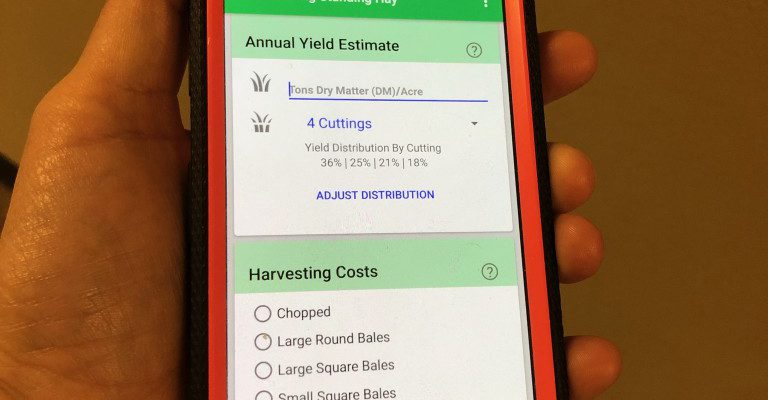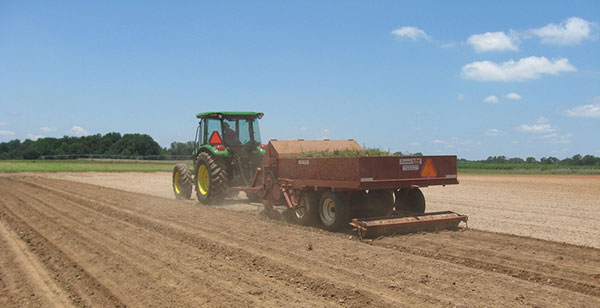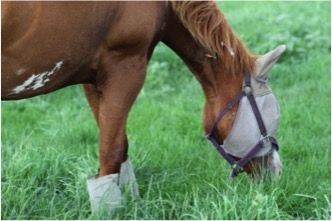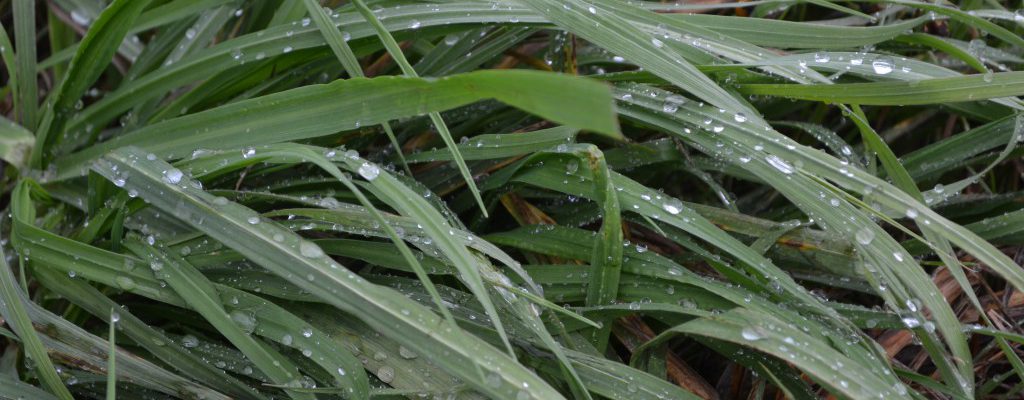Grazing
-
WHEN IS THE BEST TIME TO PUT N ON FESCUE? July 2019– Progressive Forage Grower Magazine Article Dennis Hancock, PhD. | Professor and Extension Forage Agronomist, Univ. of Georgia Every spring, there is a chorus of calls and emails “when is the best time to put nitrogen (N) on tall fescue?” The answer that I…
-
By Dr. Bill Anderson, Research Geneticist, USDA-ARS When I started as perennial forage grass breeder for ARS sixteen years ago, the primary goal was to develop a cold-tolerant seeded bermudagrass since Tifton 85 seemed to satisfy the sprigged market. The battle was to develop a seeded forage that had high biomass but also high seed production. …
Posted in: Bermudagrass, bermudagrass stem maggot, Grazing, Hay, insects, Uncategorized, Warm Season Perrenials -

By Savannah Tanner Emanuel County CEA There’s an app for that…there’s always an app for that. In the midst of an ever-increasing technology world, the agricultural industry is no stranger to smart technology. From irrigation apps to field measuring apps, we see widespread, quick, and “at the touch of a button,” farm management tools becoming…
-
By Steve Morgan Harris County CEC Weeds can reduce the quantity and the stand life of desirable forage plants in pastures and hayfields. Weeds also impact the aesthetic value of a pasture. Therefore, producers may choose to initiate weed management strategies that reduce the impact of weeds on forage production. The first step in effective…
-

By Erin Forte Churchill Macon County CEC Improved bermudagrass varieties are often accepted as one of the best grazing materials in the Southeast, but the thought of establishing these varieties through sprigging can send even the best cattle producers running for the hills. It doesn’t have to! By following the steps outlined here, you can set yourself up for success with your…
-

From the January 2019 Issue of the University of Minnesota Extension – Horse Newsletter…. Research Update: Evaluating Glucose and Insulin Levels in Grazing Horses Forage is a primary part of the horse’s diet and is often fed in the form of cool-season grasses, legumes or warm-season grasses. These forage types differ widely in their nutritional…
-

By Jeremy Kichler Colquitt County CEC Every year county agents get questions from producers concerning if they should burn their Bermuda grass hayfields. There are several benefits to burning your hayfield. Burning can help producers manage thatch in their stands. If the thatch layer becomes too thick over time then this can create several issues.…
-

By Adam Speir Madison County CEC Tall Fescue is a forage workhorse for livestock producers from north Georgia to New England. It is a cool-season perennial grass that is tolerant of many conditions, covers more than 1 million acres north of the Fall Line, and supplements bermudagrass pastures for many livestock producers from fall through spring. Despite the…
-

How is the recent weather affecting the Georgia hay crop? Similar to weather conditions in 2013, excess rain from May to July of 2018, followed by an August drought, have led to tremendous variation in the 2018 hay crop. Beef cattle producers in the Southeastern U.S. need to be on the lookout for cows experiencing…
-
If you have Incurred Losses as a Result of the Devastation of Hurricane Michael, PLEASE READ BELOW Dr. Jennifer J. Tucker, Asst. Professor, UGA CAES Tifton Dr. Dennis W. Hancock, Professor and Forage Extension Specialist, UGA CAES Athens Dr. R. Lawton Stewart, Jr., Assoc. Professor and Extension Animal Scientist, UGA CAES Athens Dr. Jacob R. Segers,…